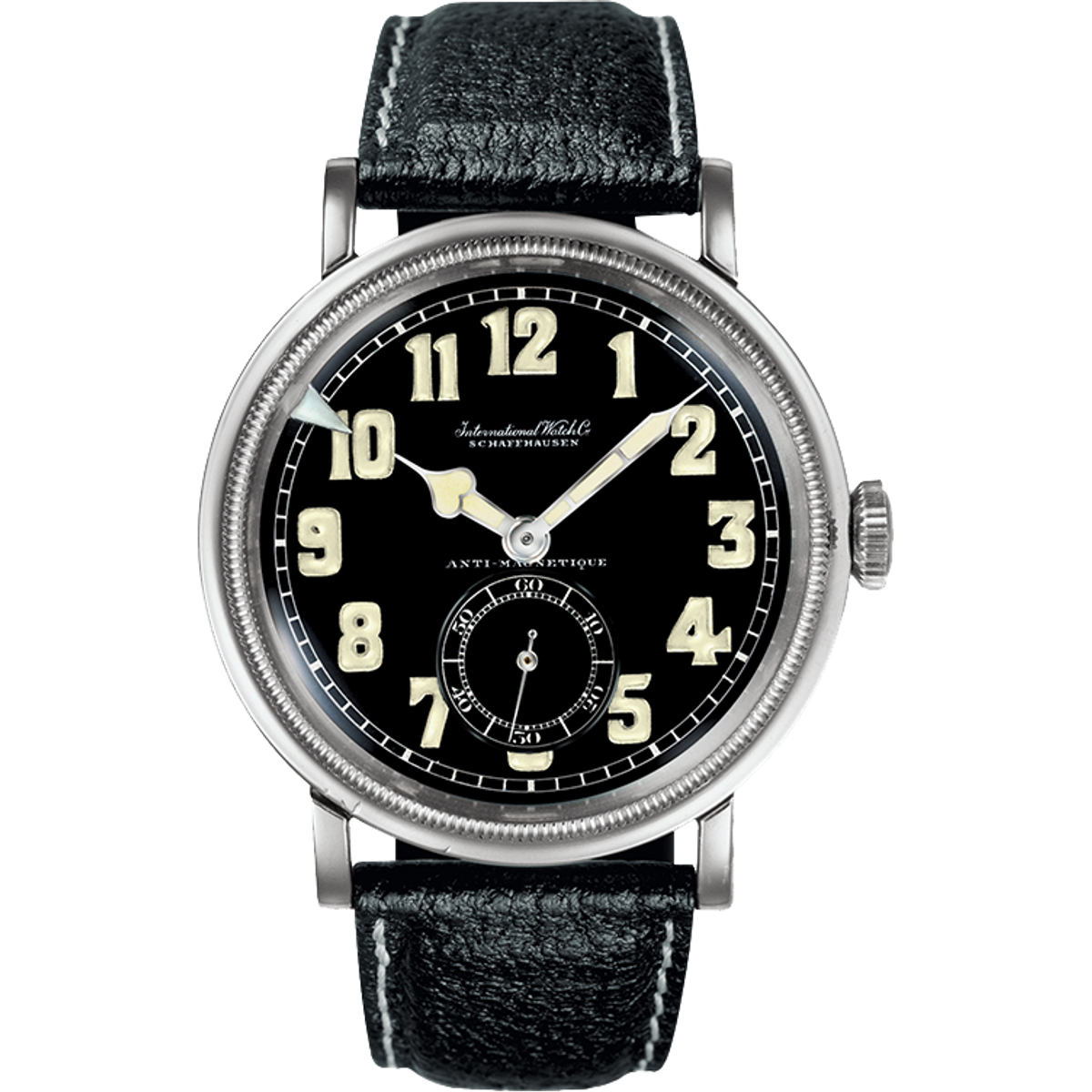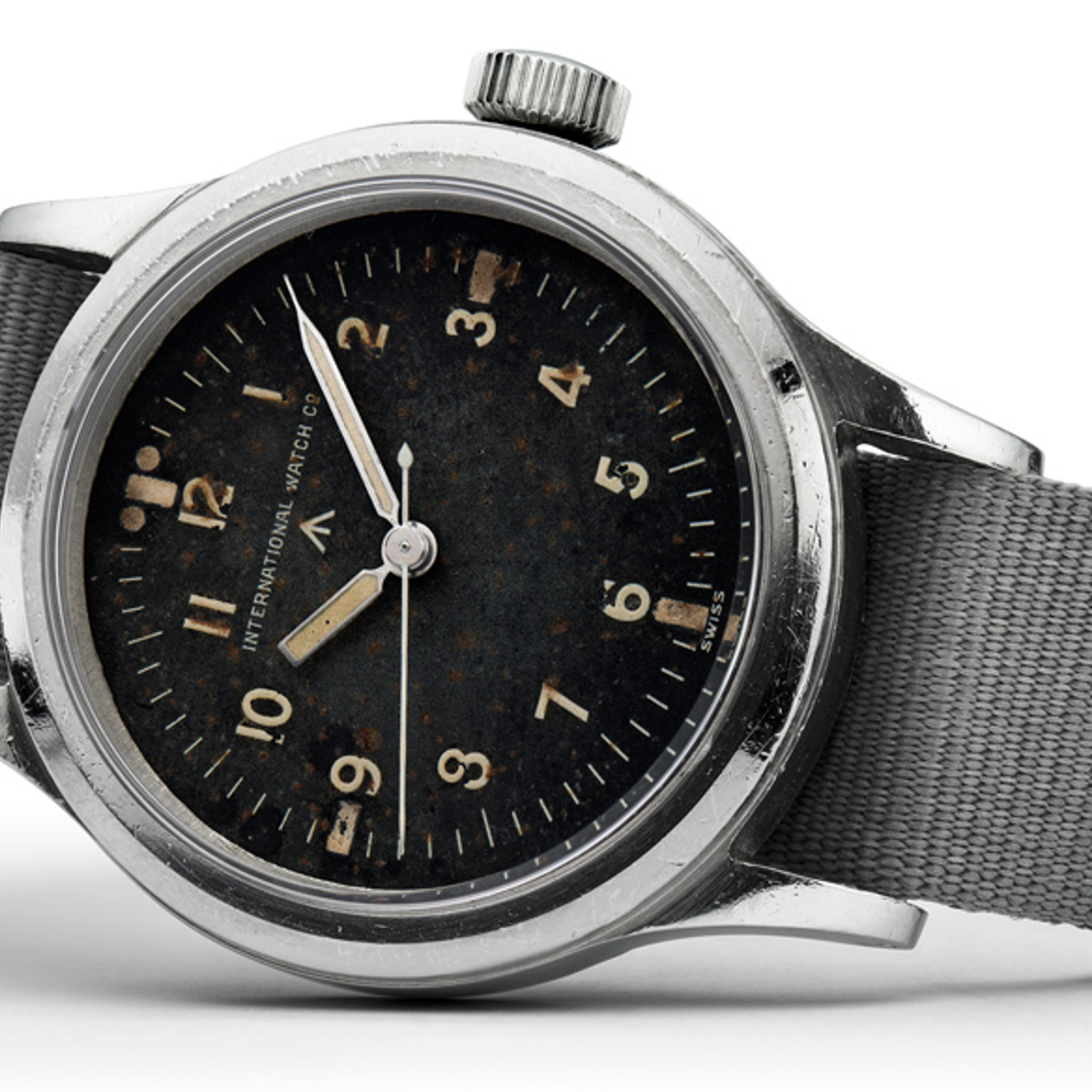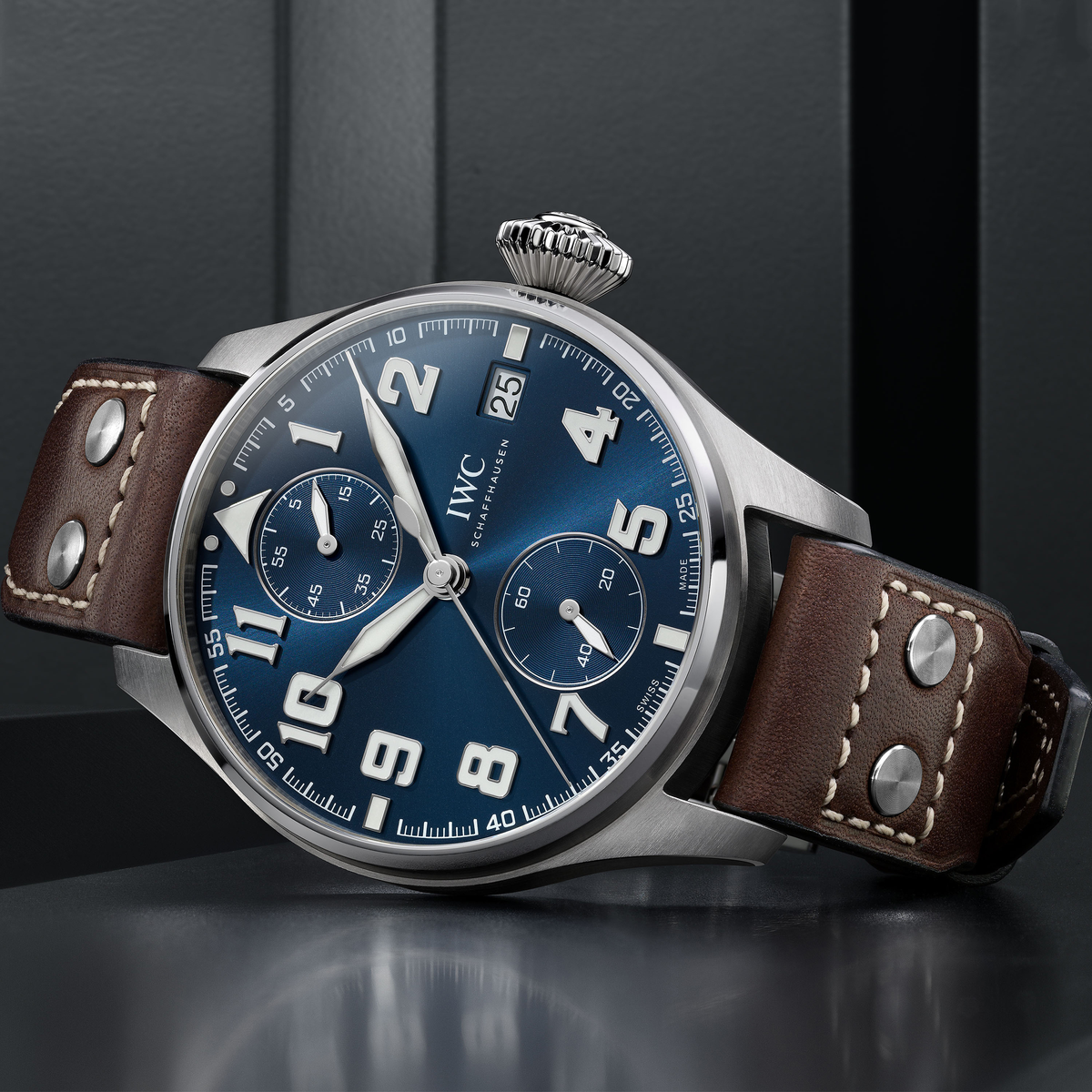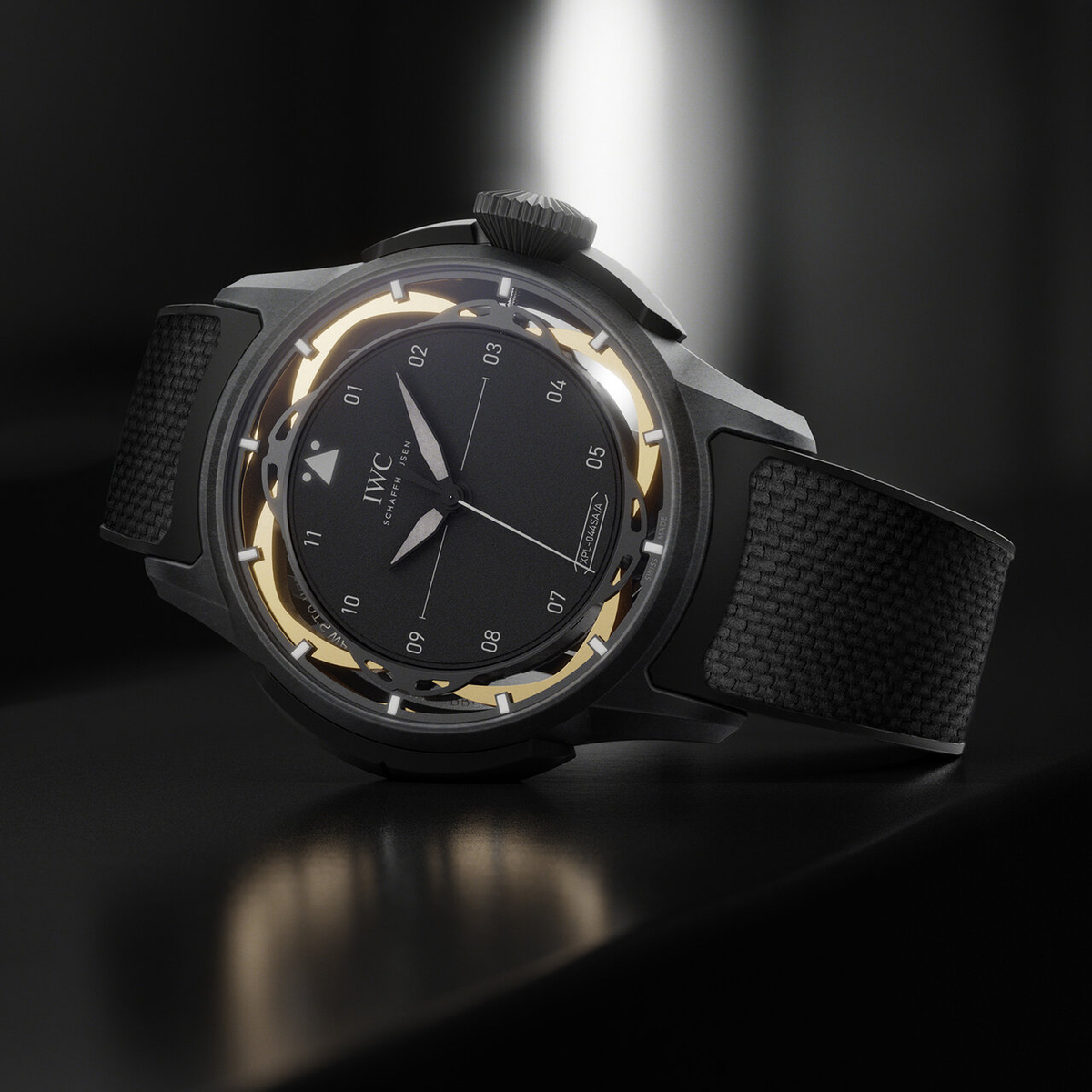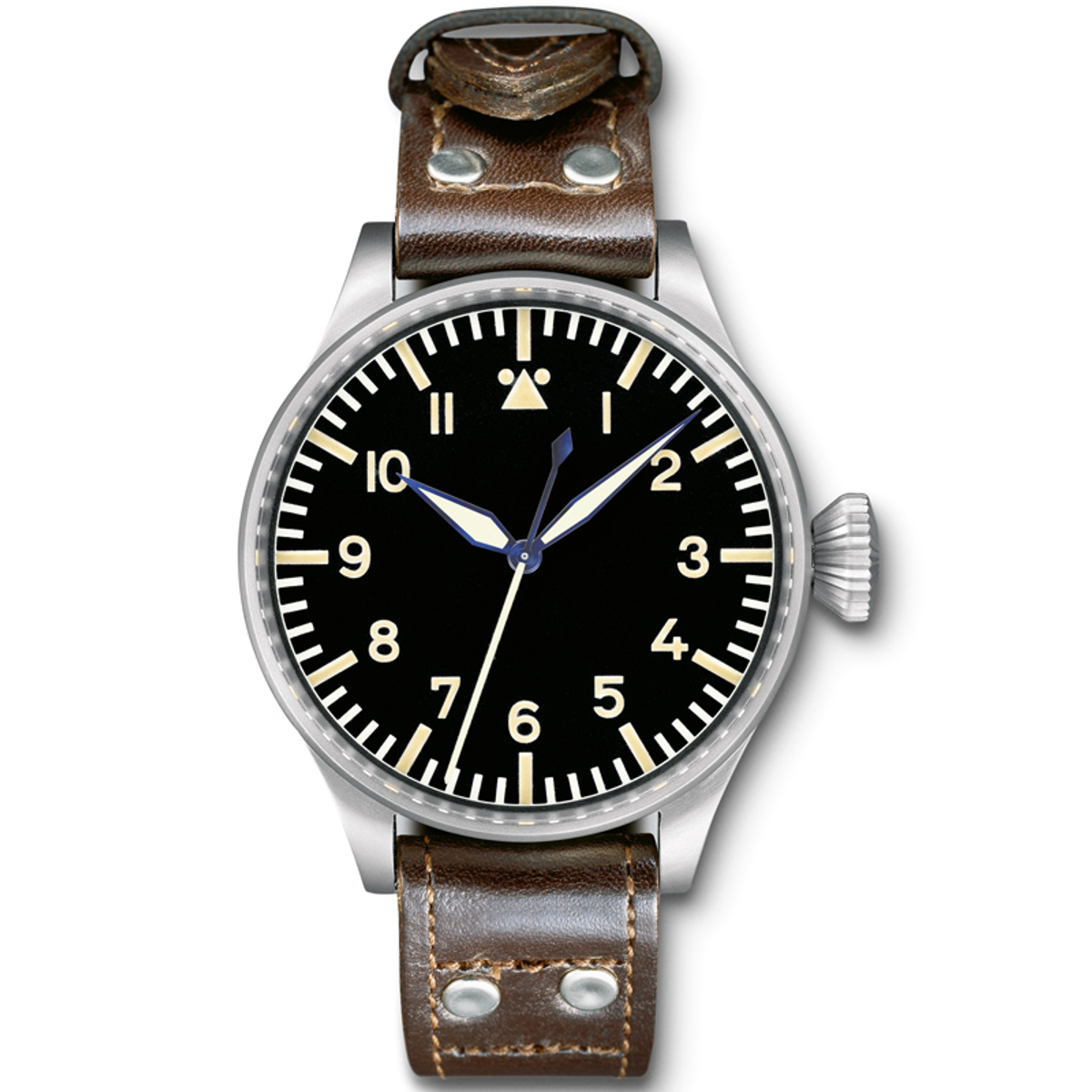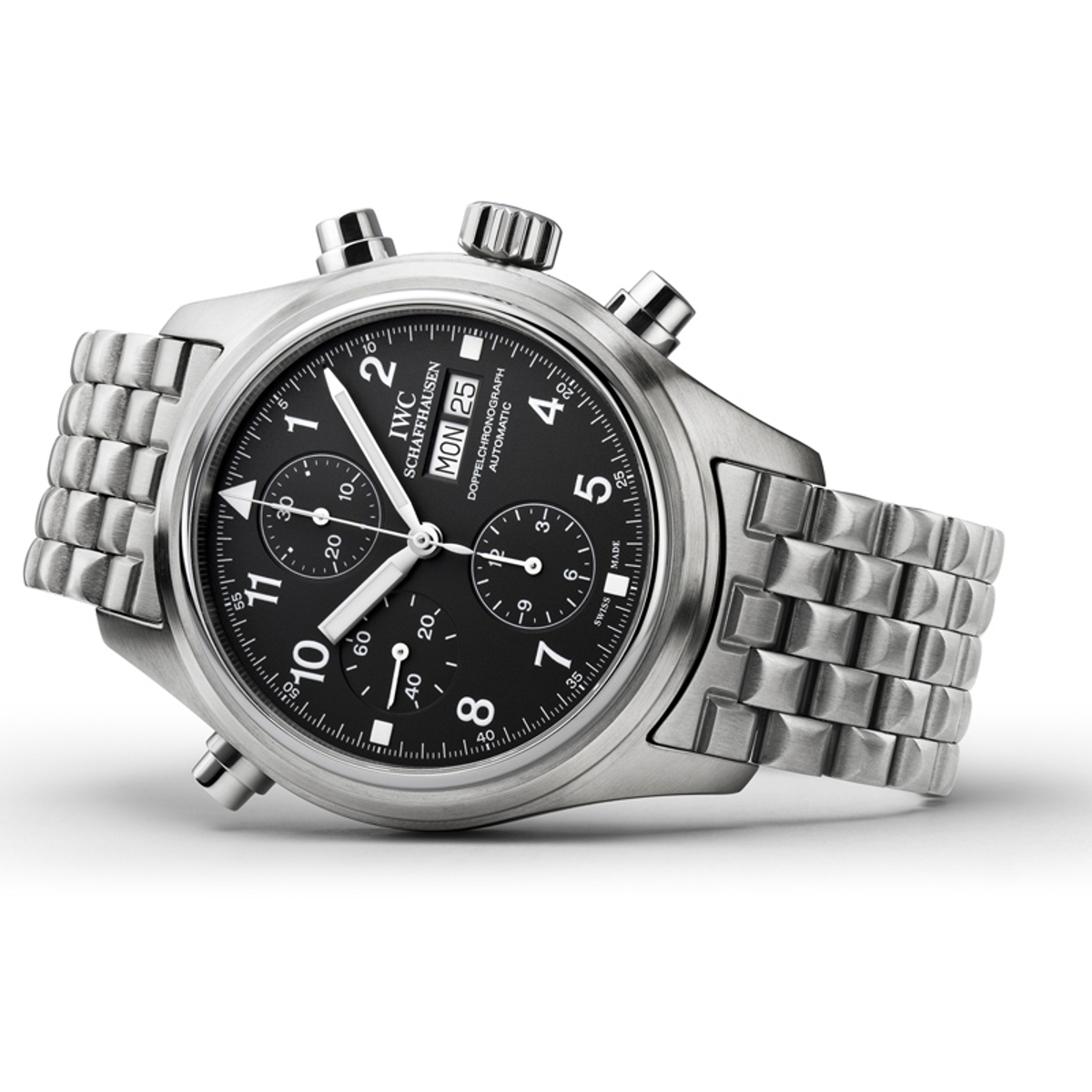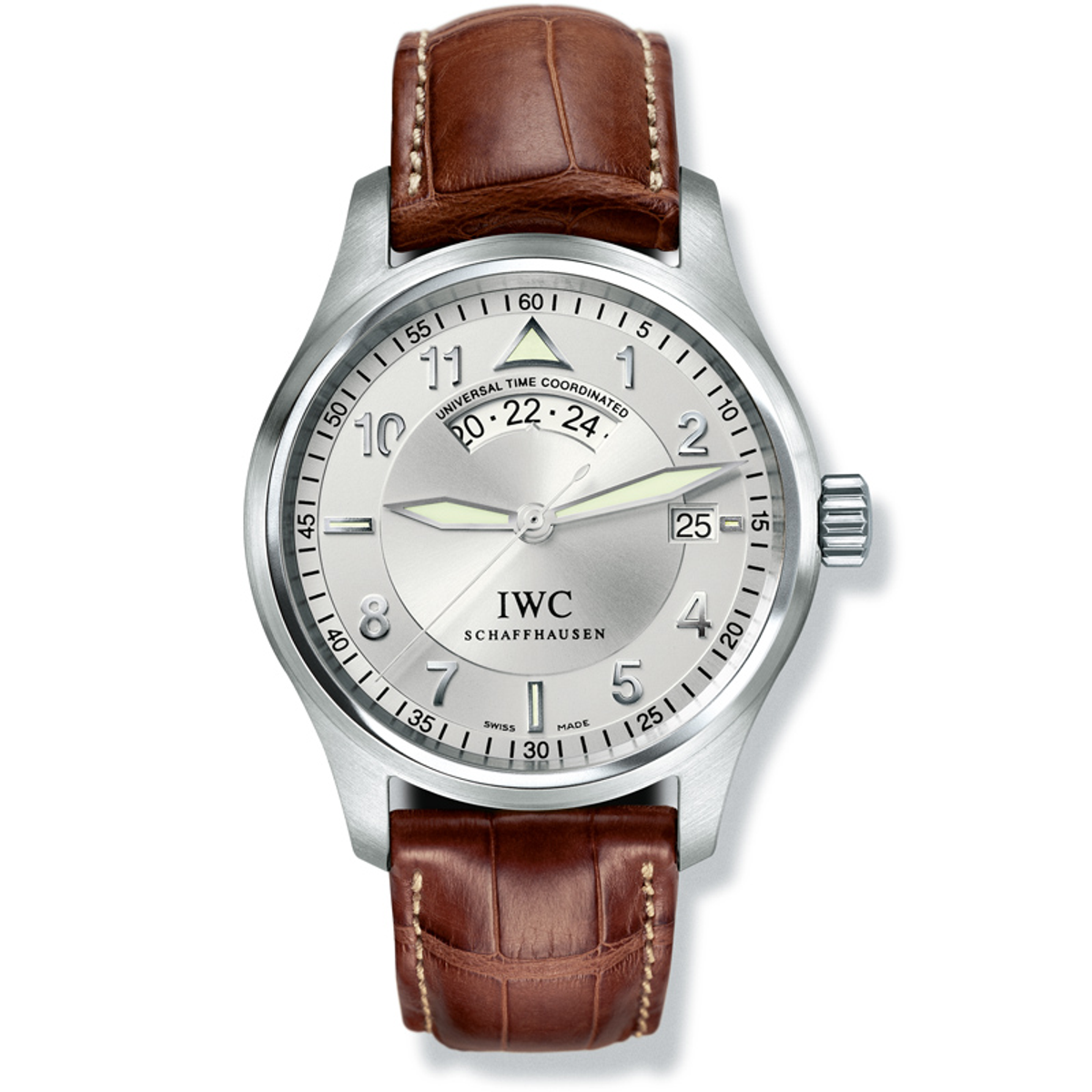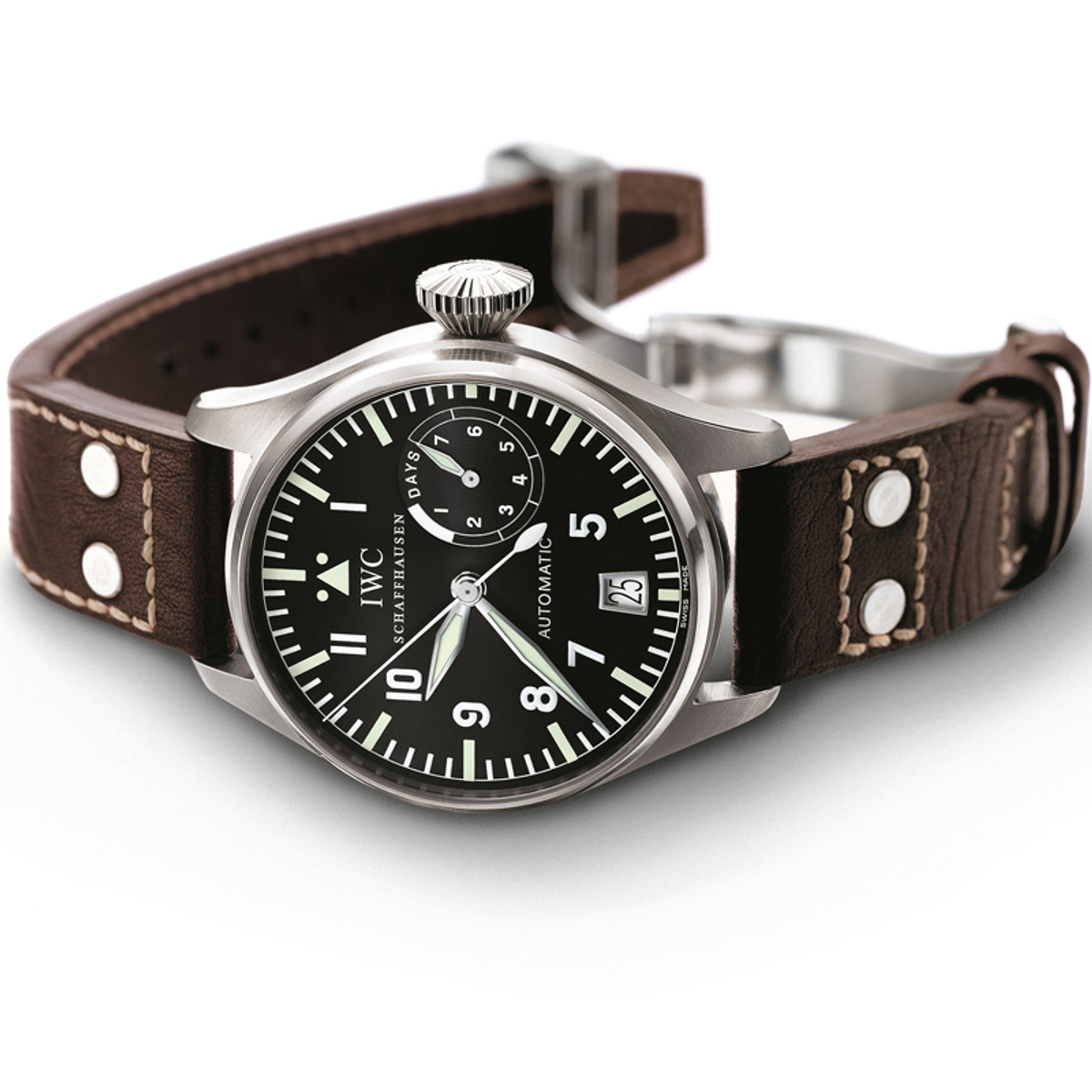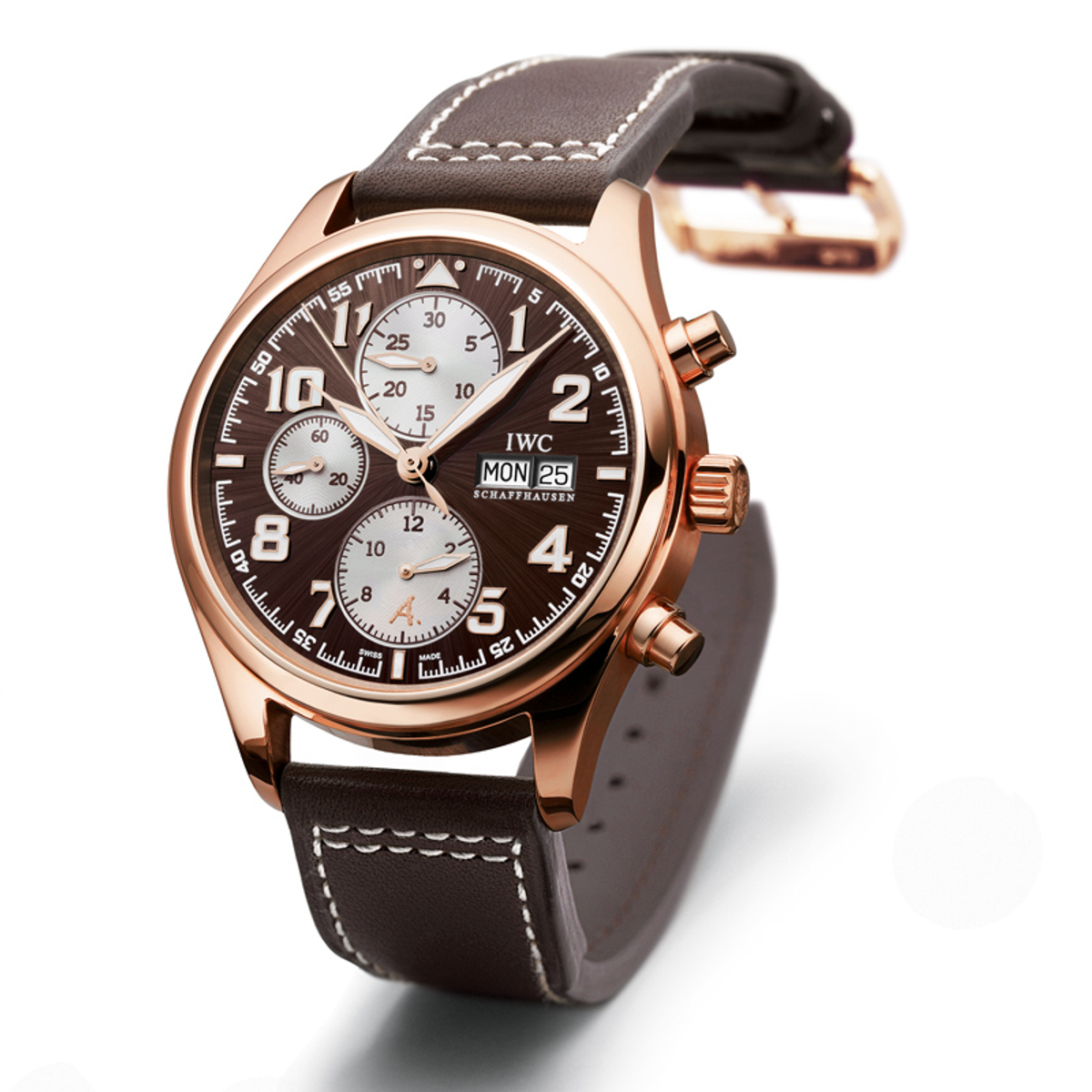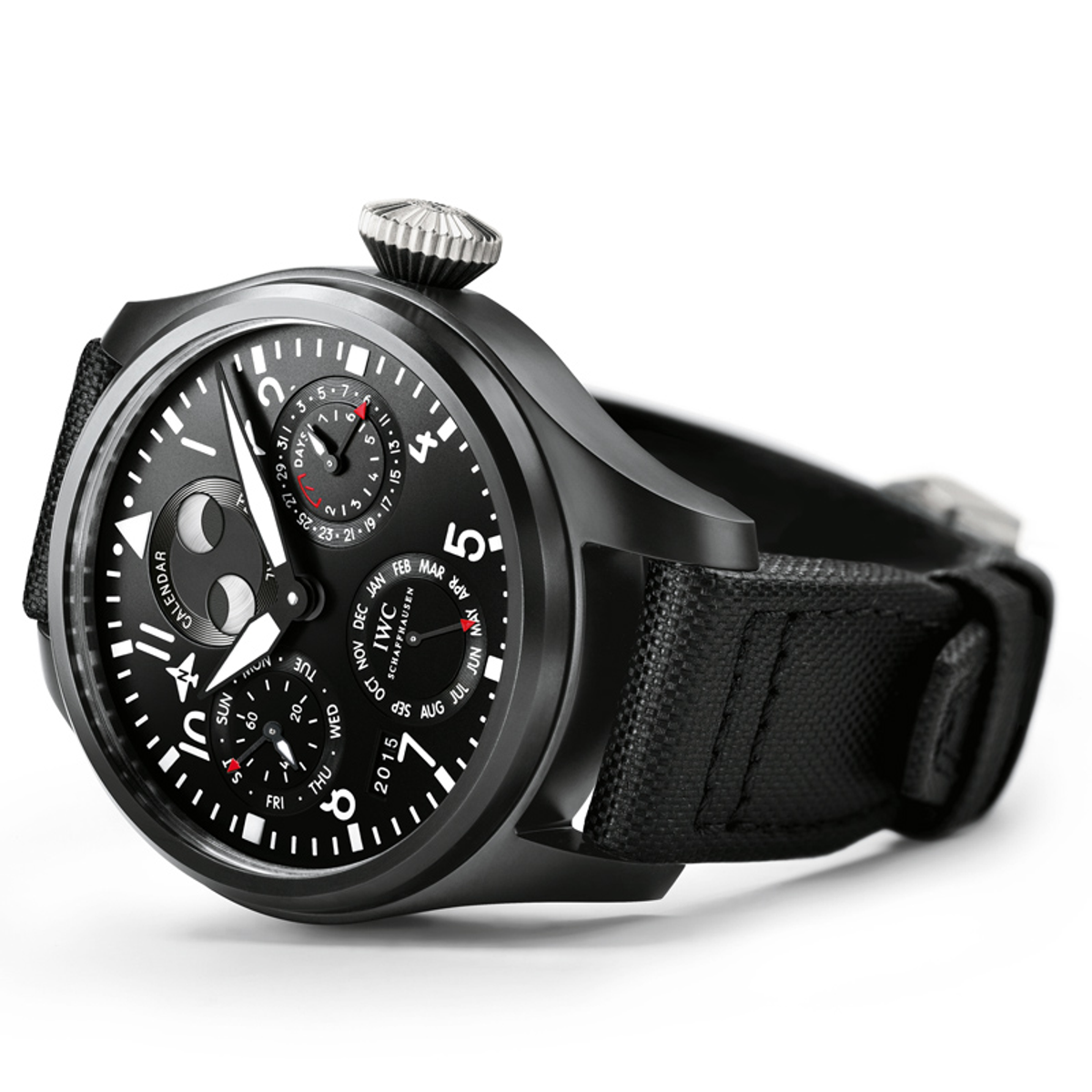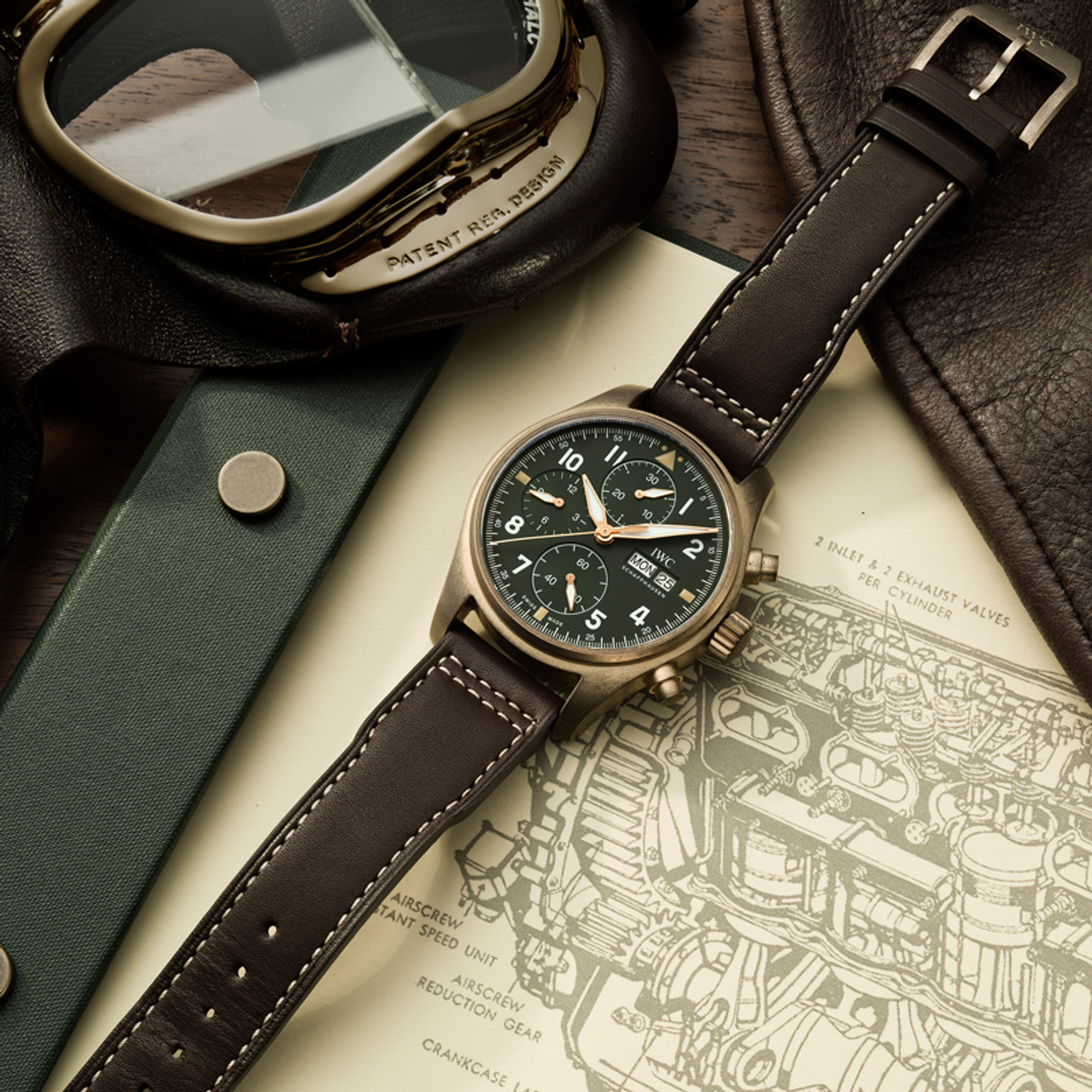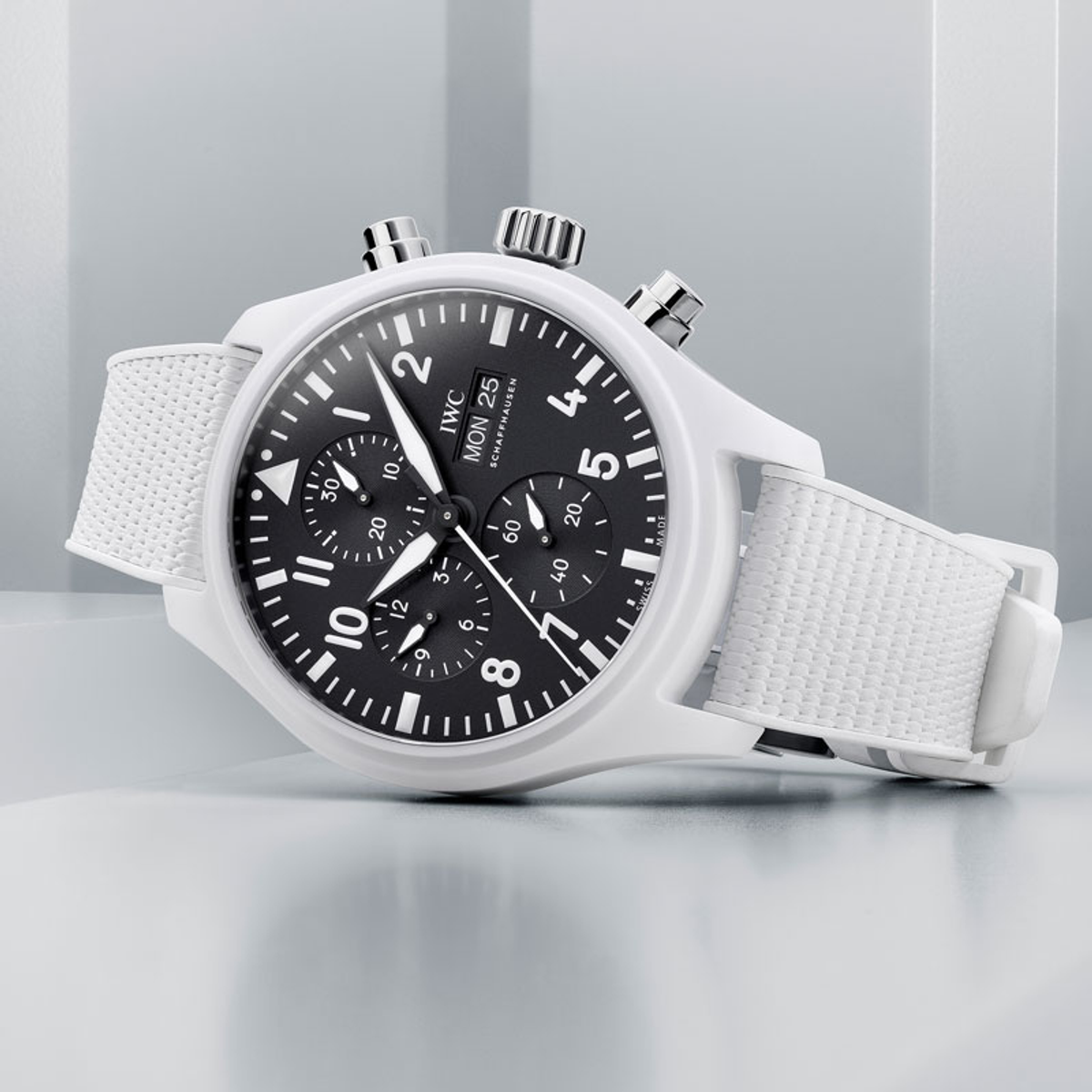This model was designed to withstand the difficult conditions endured by pilots in the cockpits at the time.
Launch Year
1936
Functions
hours, minutes, small seconds
Movement
mechanical manual-winding
Distinctive features
rotating bezel with reference arrow to record take-off times, antimagnetic escapement
IWC's history has been closely linked to the world of aviation since its very first pilot's watch in 1936. The idea of developing such a timepiece was put to the then director of the Schaffhausen-based Manufacture, Ernst Jakob Homberger, by his two sons who were passionate about aviation. The Pilot’s Watch was distinguished by the extreme legibility of its dial, circled by large luminescent Arabic numerals and swept by equally luminescent hands. A reference arrow, adjusted by the rotating bezel, enabled pilots to record take-off times. The movement in this first aviator's watch by IWC was a hand-wound calibre with an antimagnetic escapement. In short, this model was designed to withstand the difficult conditions endured by pilots in the cockpits at the time, particularly temperature variations ranging from -40 to +40 degrees Celsius.
In 1940 IWC followed up with a landmark professional model, the Big Pilot’s Watch 52 T.S.C, produced in a 1,000-piece limited run for the Luftwaffe. Measuring 55mm in diameter, 16.5mm thick and weighing 183 grams, this impressive timepiece with a central seconds hand and the famous large conical crown for easy handling, even with gloves, is the largest watch ever developed by IWC. In addition to the functional design of the case, IWC focused on legibility, drawing inspiration from the on-board instruments of the time.
In 1949 IWC began a new chapter in this aeronautical saga when, in response to a call for tenders issued in the late 1940s by the Royal Air Force, it developed the Mark XI. The model, manufactured in 1948 and delivered in 1949 to British pilots and the Commonwealth Armed Forces, was in use until 1981. Protected by a second, soft iron inner case to make it impervious to magnetic fields, Calibre 89 steadily beat the time. This movement was the work of Albert Pellaton, then Technical Director of IWC and author of a particularly effective bidirectional pawl winding system, now known as the Pellaton winding system.
The three pilot’s watches created between 1936 and 1949 began a long aeronautical tradition for IWC, since extended to include multiple models for men and women. In 1992 the Pilot’s Watch collection was expanded with a double chronograph. In 1998 the brand unveiled the Spitfire UTC model with the time and date set by the crown. This model led to the creation of a complete Spitfire range, launched in 2003. A year earlier, in 2002, the Big Pilot’s Watch was revisited in a scaled-back 46mm version with a self-winding movement endowed with a 7-day power reserve. The design of this watch was updated again in 2006 with five new models, including the famous "Saint-Exupéry" aviator's watch that marked the 75th anniversary of the famous writer-pilot’s novel Vol de Nuit. 2012 brought the launch of the Top Gun line, whose military style is enhanced by the choice of a black ceramic case. Not forgetting 2013, which saw the first special editions of "Le Petit Prince" to mark the 70th anniversary of Saint-Exupéry's eponymous novel.
In 2018, for its 150th anniversary, IWC presented a new version of the Big Pilot’s watch in the shape of a limited-edition annual calendar model. Bronze made its debut the following year, alongside two technically complex models: the Big Pilot’s Watch Constant-Force Tourbillon and the Pilot’s Watch Perpetual Calendar Chronograph, both “Le Petit Prince” editions. The collection broke new ground in 2020 with the Big Pilot’s Watch Shock Absorber XPL. This new shock-protection technology - eight years in development – is based on a cantilever spring in bulk metallic glass which protects the movement against accelerations in excess of 30,000 g. IWC presented this innovative system in a 44mm case in Ceratanium; the brand’s proprietary titanium alloy.
Key Characteristics
- Round wristwatch created for pilots in 1936, followed in 1940 by the Big Pilot’s Watch with an outsize 55mm diameter
